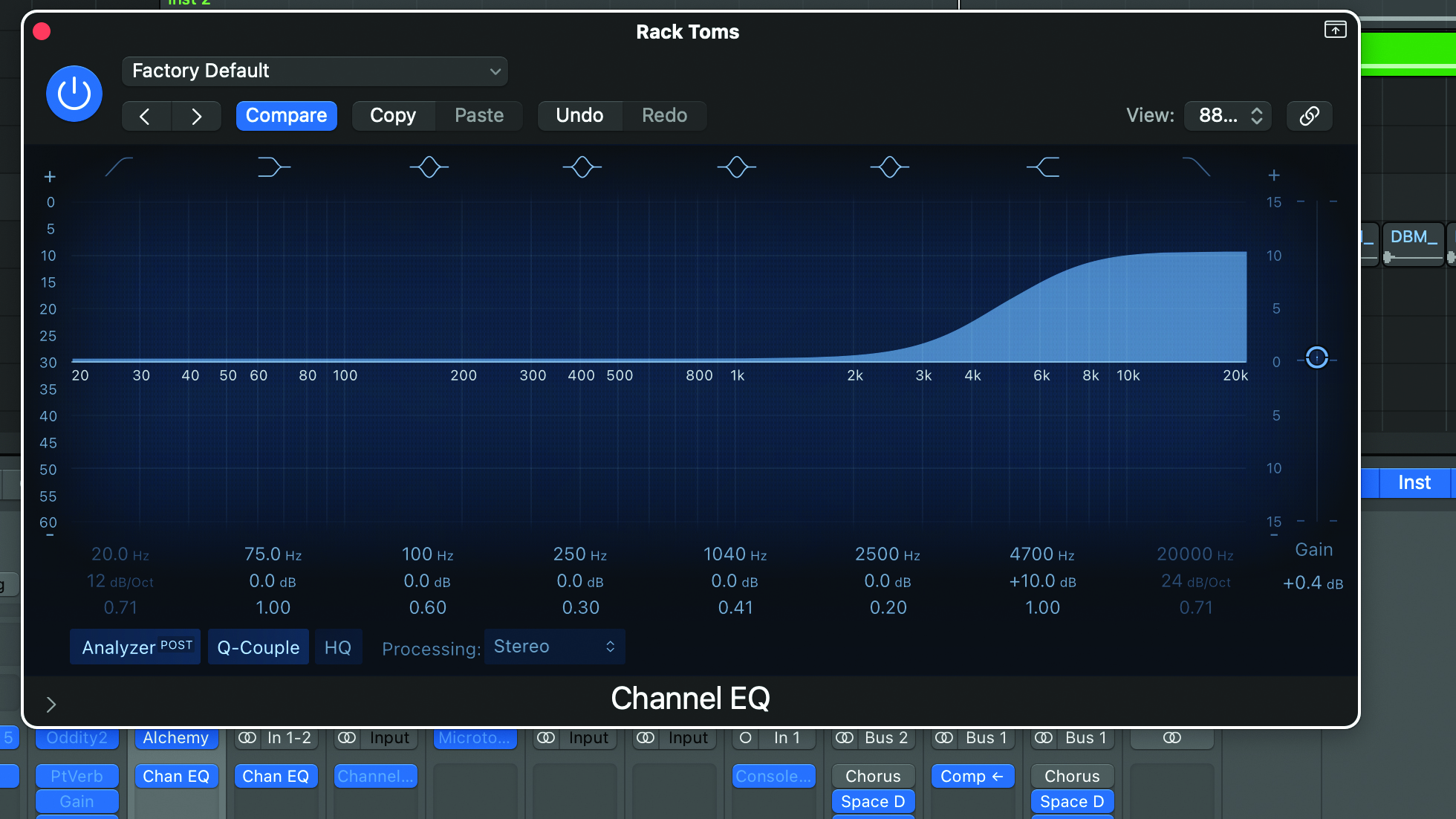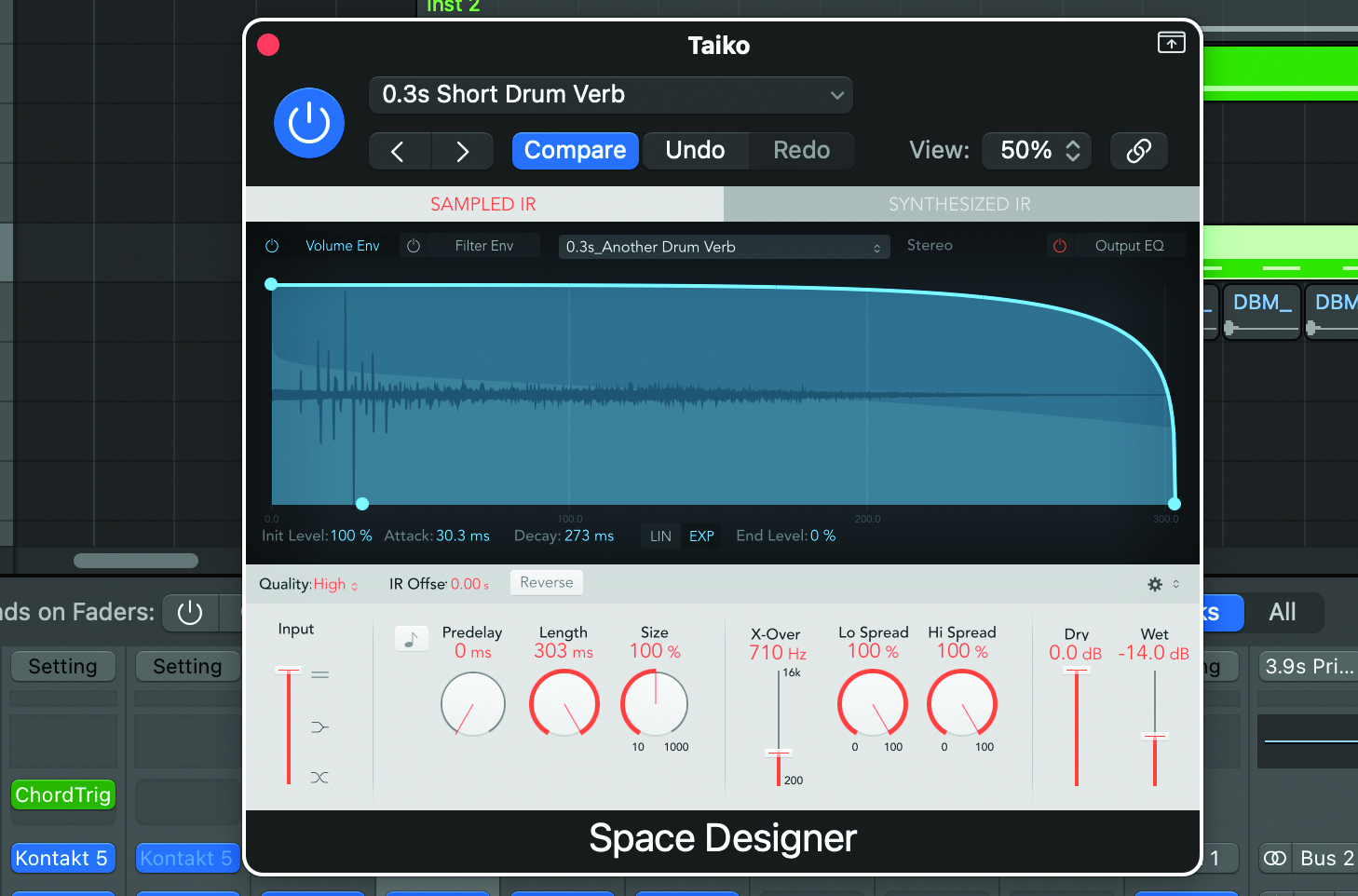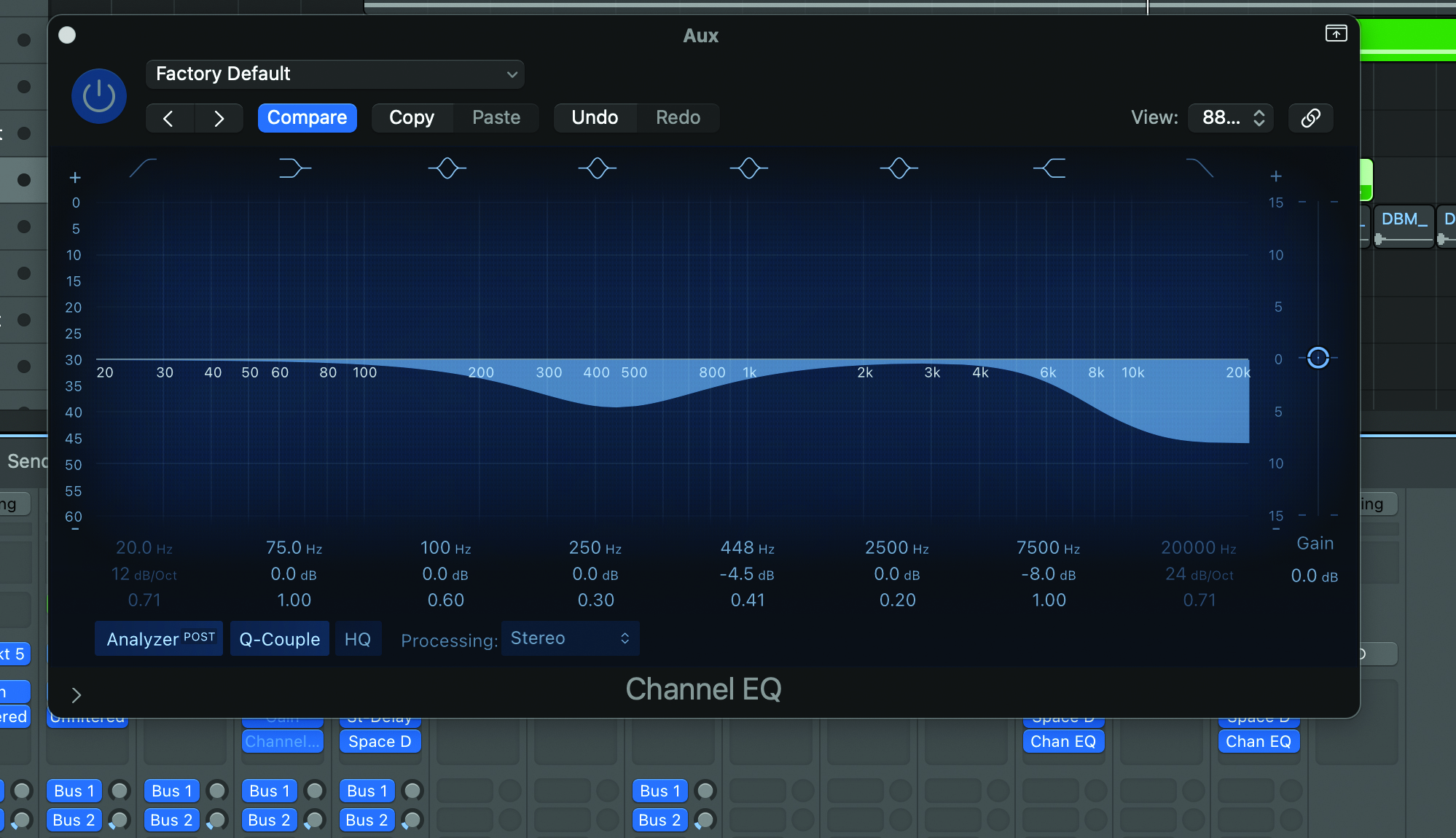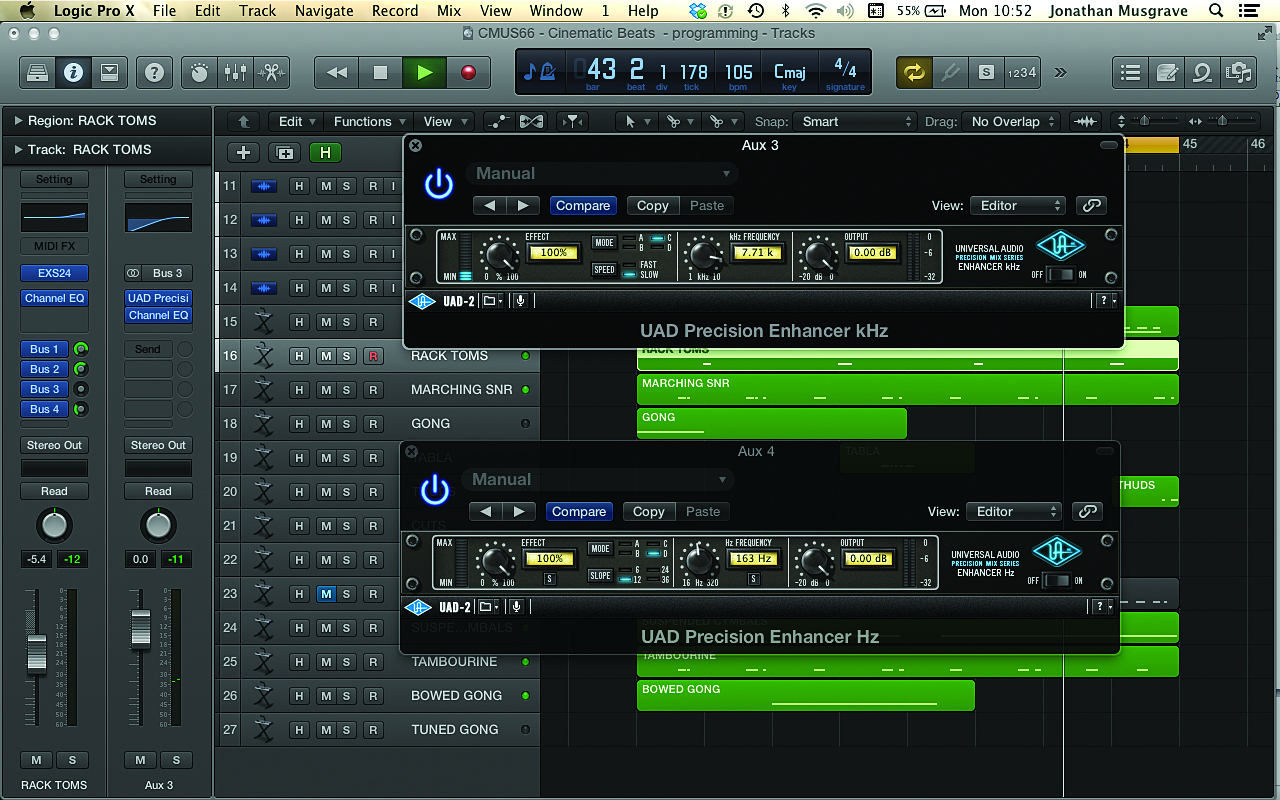How to produce cinematic beats worthy of a Hollywood epic
Enormous drum and percussion sounds are the order of the day as we turn our attention to producing blockbuster beats suitable for a Hollywood epic

Step 1: With our parts programmed, the final stage is to make them sound as epic as possible without losing focus and swamping them in effects. We start with a little EQ sweetening to help bring out the crack on our toms. We use a gentle shelving EQ at 4.7kHz, boosting heavily by 10dB. (Audio: Step 1)

Step 2: To add space and scale to a sound without using a regular reverb, we can apply short delays. We set up a stereo delay on an auxiliary, with the two delay channels hard panned. Delay settings of 30ms and 60ms with no feedback are ideal, and we filter the low frequencies from the wet signal to avoid low-end clutter.

Step 3: Having said that, reverb is the best tool for adding scale to any sound, and we can apply it to specific sounds for specific effects. We insert a gated convolution reverb across the taiko, adjusting the volume envelope tail to taste. We also set up a general purpose convolution reverb (around 3s long) on an auxiliary, again tailoring the volume envelope to keep things tidy.

Step 4: Reverb can also add too much mid- and low-frequency build-up, or sound too bright, so it usually needs tailoring with EQ. On our auxiliary reverb we use a bell-shaped EQ cut to scoop out some of the low mid-range at around 450Hz, and a very gentle shelving EQ cut at around 7.5kHz to soften the highs.

Step 5: Sometimes a sound will need a little help in the top or bottom end, but EQ alone won’t cut it. This is the time to try a harmonic exciter. Used sparingly, these add a processed sheen that’s ideal for cinematic beats. We use both low- and high-frequency harmonic exciters as auxiliaries rather than inserts.

Step 6: Our final process is to use a stereo tool to keep the low frequencies mono and spread the higher frequencies. Our plugin simply uses a filter to make the frequencies below a certain point mono, and allows us to rebalance the mid and sides aspects of the stereo signal. We can use this on individual sounds, sub-groups or the main output.
Want all the hottest music and gear news, reviews, deals, features and more, direct to your inbox? Sign up here.
Computer Music magazine is the world’s best selling publication dedicated solely to making great music with your Mac or PC computer. Each issue it brings its lucky readers the best in cutting-edge tutorials, need-to-know, expert software reviews and even all the tools you actually need to make great music today, courtesy of our legendary CM Plugin Suite.
